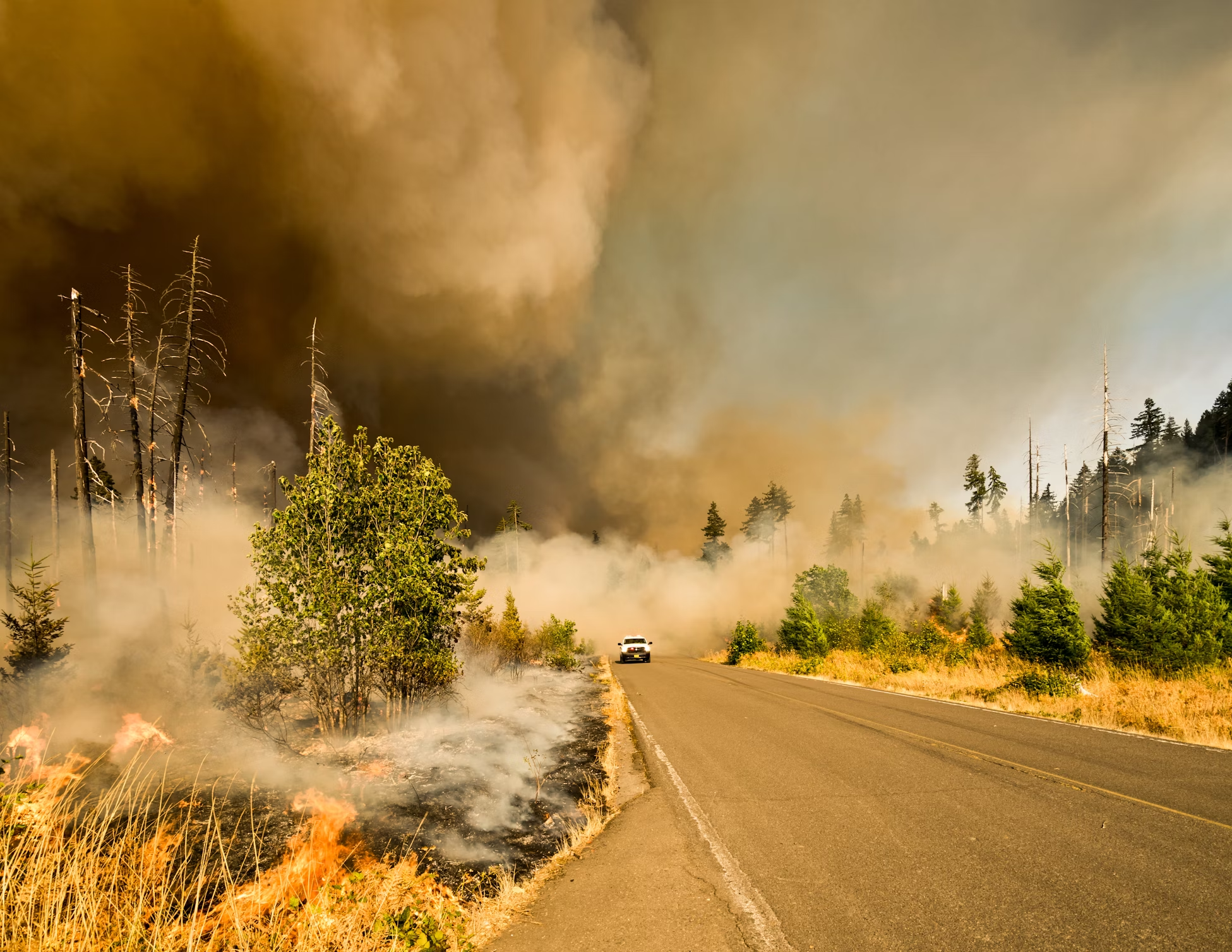Lawyers, bar associations, and law societies have an important but not fully recognized role to play in achieving the net zero goal in the Paris Agreement. Over the last few years, a unique collaboration involving the American Bar Association (ABA), the International Bar Association (IBA), the Brazilian Bar Association (OAB), and the Law Society of England and Wales (LSEW) has begun to discuss the role of lawyers in combatting climate change and share best practices. I participate in this collaboration through the ABA.
My purpose here is to explain the important role of lawyers, describe what has been done so far and what is planned, and to suggest that lawyers as lawyers—everywhere–need to become more deeply engaged in the effort to achieve net zero.
Climate Change as an Increasingly Common Feature of Law Practice
Climate change is no longer an issue of concern only to environmental and energy lawyers. Now it affects, or will soon affect, nearly every area of law practice. Not so many decades ago, we could safely assume that the climate in any given region generally operated within certain fairly predictable boundaries of temperature, rainfall, and the like. That is no longer true, as record-breaking floods, drought, and extreme heat waves occur with growing regularity. And that has implications for tort law, contract law, and property law, because it is less clear in many ways how basic legal principles such as negligence, foreseeability, force majeure, and reasonableness will apply to particular problems. (See this article by Jim Rossi and J.B. Ruhl.) These, of course, cut across virtually every practice area in law. How many times can a party successfully argue that it could not have expected this new record-breaking heat event? What does it mean to act reasonably in a changing climate?
Climate change is also affecting a growing number of legal practice areas, including business and corporate governance, real estate, land use, insurance, immigration, and employment law. Because the effects of climate change fall most heavily on the poor, people of color, people living in vulnerable and low-lying areas, and the elderly, lawyers representing them increasingly and with greater success resort to human rights and civil rights law. And, of course, the work of environmental and energy lawyers is increased and made more challenging by the growing number and stringency of climate-related regulations, statutes, and directives. John Kerry, then U.S. presidential envoy on climate change, summarized all of this in a speech to the ABA’s 2021 annual meeting. “You are all climate lawyers now,” he said, “whether you want to be or not.”
As a result, every lawyer needs to be “climate conscious.” In a 2021 article, Brian Preston, Chief Judge of the Land and Environment Court of New South Wales, Australia, explains climate-conscious lawyering in this way:
A climate-conscious approach requires an active awareness of the reality of climate change and how it interacts with daily legal problems. A climate-conscious approach demands, first, actively identifying the intersections between the issues of the legal problem or dispute and climate change issues and, second, giving advice and litigating or resolving the legal problem or dispute in ways that meaningfully address the climate change issues.
As climate change grows in importance to law practice, public attention to the role of lawyers in climate change is also growing. In 2022, the United Nations released a special report focusing on the role of nonstate actors, including law firms, in reducing greenhouse gas emissions. Law firms and others, the report said, “should publicly disclose how customer engagements contribute to net zero and how greenwashing is being tackled.” In the U.S., Law Students for Climate Accountability publishes an annual scorecard that assigns a letter grade to each of the Vault 100 law firms based on “how much fossil fuels work they have engaged in over a five-year period.”
Bar Association Resolutions
A small but growing number of law associations have adopted a resolution or commitment on their role and the role of lawyers in addressing climate change. Such resolutions are not magic-bullet solutions, but they provide a foundation for further work by the bar association on climate-conscious lawyering. (IBA has a registry of such resolutions here.)
The ABA House of Delegates, the ABA’s policy making body, adopted resolutions urging action on climate change in 2008 and 2019. The 2019 climate change resolution urges lawyers “to advise their clients of the risks and opportunities that climate change provides.” It also “urges lawyers to engage in pro bono activities to aid efforts to reduce greenhouse gas emissions and adapt to climate change.”
The IBA issued a “Climate Crisis Statement” in 2020 that builds on the ABA resolution. The IBA statement “urges lawyers, acting in accordance with their professional conduct rules and the rule of law, to consider…taking a climate-conscious approach to problems encountered in daily legal practice.”
LSEW adopted a similar resolution in 2021. But it goes beyond the ABA resolution and the IBA statement by committing to “provide guidance to solicitors on how, when approaching any matter arising in the course of legal practice, to take into account the likely impact of that matter upon the climate crisis in a way which is compatible with their professional duties and the administration of justice.” In late 2023, LSEW committed “to being net zero by 2030” in its operations.
Also in 2023, OAB issued a recommendation concerning the role of OAB and lawyers in addressing climate change. It recommends that lawyers “inform their clients or the companies with which they maintain professional ties of the risks and legal responsibilities that may arise from actions or omissions that contribute negatively to the climate crisis.” It also recommends that large law firms commit “to reducing direct and indirect greenhouse gas emissions associated with their professional practice, and, when absolute reduction is impossible, to offset them, in order to achieve carbon neutrality by the year 2050.”
Climate Change Guidance to Lawyers
In 2023, LSEW carried out its earlier resolution by publishing what appears to be first-of-its-kind guidance for solicitors on advising clients concerning climate change. As time passes, other jurisdictions will likely adopt similar guidance for lawyers.
The LSEW guidance covers the duty of care solicitors may have in advising on climate risks, “advised emissions” (emissions associated with matters on which solicitors advise), the ethical implications when advising a client in the context of climate change, and greenwashing implications for law firms. It identifies five different climate risks for which solicitors should be prepared in advising clients: physical risks, new climate-related regulation or legislation; alteration of existing regulation or legislation; shifting client expectations, duties of care, and competency requirements; and target setting for carbon reduction. The guidance also recommends that law firms set and carry out their own emission reduction targets, not only for their Scope 1-3 emissions, but also for their “advised emissions.” Advised emissions, the guidance states, are likely to be more significant than their Scope 1-3 emissions.
Other nongovernmental organizations have put forth even more ambitious proposals for aligning legal advice with the Paris Agreement goal of limiting warming to 1.5º C. These include UN Race to Zero and the Net Zero Lawyers Alliance.
Professional Responsibility and Climate Competence
Climate-conscious lawyering can be justified on many grounds, but it is increasingly clear that professional responsibility is at the heart of these justifications. The LSEW guidance, for example, is anchored in ethical responsibilities for solicitors contained in United Kingdom law. These are the duty to “look beyond the narrow scope of an instruction by a client to consider whether and to what extent climate legal risks are relevant,” the duty “to warn clients of the legal risks in certain contexts,” the duty to disclose “climate legal risks which might impact the client’s interests in-scope of the retainer,” and the “duty to uphold service and competence levels.”
The duty of competence is of particular importance. Irma Russell, Matthew Bogoshian, and I have just published an article making the case that climate competence is required for competent lawyering. Our article first describes the lawyer’s duty of competence, set forth in Model Rule 1.1 of the ABA Model Rules of Professional Conduct and every U.S. state’s rules of conduct. While the rule does not change, its meaning evolves, in the words of the rule, as the “legal knowledge, skill, thoroughness and preparation reasonably necessary for the representation” evolve.
Using numerous examples from current law practice, we make the following proposal to facilitate discussion, debate, and, we hope, action:
A lawyer should:
- understand enough about the changes in climate-related physical risks facing his or her client’s activities to advise the client about those risks and how the client can mitigate or adapt to them.
- anticipate that climate change risks will alter the way existing laws and regulations apply (e.g., force majeure, negligence), and advise the client about how to mitigate and adapt to these risks.
- consider the risk that counterparties to transactions may change their customary ways of doing business with one’s client as those counterparties adapt to risks of climate change (e.g., property insurers in coastal areas vulnerable to climate change), and advise the client about how to mitigate or adapt to these risks.
- understand what a just and equitable transition to decarbonization means for his or her clients, and advise the client about the risks and opportunities that entails.
Conclusion: Lawyers as Leaders
The principal organizations described in this article have held a variety of events together to raise the the profile of the role of law and lawyers in achieving the Paris Agreement goals. (For more on our work, see this article and this YouTube recording). But obviously, a great deal of work remains to be done—by bar associations, law schools, law firms and other law organizations, and lawyers. This work includes climate change resolutions by other law associations, educational programming for lawyers and law students, and integration of climate change into professional responsibility and competence standards. In addition, lawyers can and should build climate change into their legal practice, whatever that practice is. (This short book provides practical advice for getting started.)
Lawyers around the world have played a key role in the key movements of the past several centuries to foster justice and the rule of law, including abolition of slavery and recognition of civil and human rights. Climate change demands a similar response from lawyers and law associations, and the work has just begun.

John C. Dernbach
Professor Emeritus, Widener University Commonwealth Law School. This article is written in his personal capacity, and nothing said here necessarily reflects the views of the ABA or any other organization.




